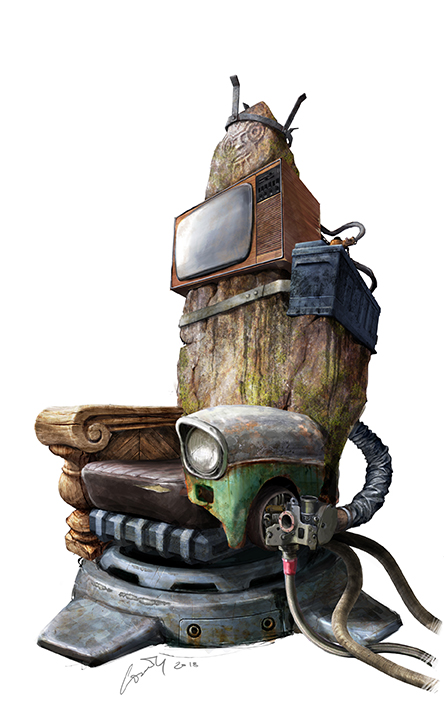Lessons we learned
When our horizons of production pipelines in the gaming industry were still clouded by inexperience, we had a very defining moment.
We’ve been creating 3D art for video games for over 15 years. We believe we’ve evolved quite a lot, and it feels right, comfortable and safe. But that didn’t come overnight, it’s something we nurtured and evolved over the years. And often, the mistakes we made were the ones that helped guide us on the right path. Admitting mishaps and learning from them is one of the most powerful tools for growth.
The Brief is the first vital step in the production pipeline of game assets.
So what happened? Well, like we said, we were fairly new at this. A new client had requested our services, and the entire team was so excited! New projects, new assets, new memories! We received some pointers from the client and we began our work. And we mean really started work – spirits were high, the smell of dedication was in the air. The entire Team was thrilled, the artists worked their visual and technical magic. Their hands and their passion shaped an outstanding asset that we were all smitten with. You can imagine how eager we were to show our client how vividly we had brought their vision to life. The asset was sent for feedback and…
Keep moving forward
…everything came crashing down. The client hated our asset. Completely and absolutely. No, not because it wasn’t up to their standards. But because it did not match their vision. Why? Because we skipped one of the most important stages of the pipeline – the briefing stage. We assumed we had enough information to understand the client’s wish, but we didn’t, and thus our work was voided.
But if you hit an obstacle in your way, you go over it, right? And over it we went. Though we were upset about the feedback, we gathered the entire team, restarted our minds to focus on the lessons to be learned rather than the negativity, and off we went. After many discussions and deliberations, we knew what we had to do. Strengthen the briefing process, making sure no detail is left behind. We set the standards by which our work and passion were to be guided. Our Standards of Artistic Excellence.
Learning is a state of mind
Naturally, this StandArt, as we refer to it, grows continuously. Every project we shape adds to our knowledge and improves our Standards. When our artists go off exploring new visual lands, these documents are their maps. They ensure the projects and the assets match the client’s vision. And today we want to share some of those with you.
The master document of our Artistic Standards is structured in 4 main areas:
- Chapter I – The Brief
- Chapter II – Shapes & Volumes
- Chapter III – Textures & Materiality
- Chapter IV – Artistic License
Ask anything to understand everything and assume nothing.
We began our #StandArt with the Brief, the document that should accurately define the client’s vision and needs, so that our artists understand what path to take. It is the result of a collaborative effort between our team and the client. The information it contains ranges from artistic vision (colours, materials, concept art) to technical vision (upload/download procedures, file formats, LOD’s etc.). It ensures a smooth process and removes uncertainty.
So now you’ve read about our story and the importance of the Brief. What’s next? You can get started on your work by downloading our Brief guide below.
Chapter II coming soon! Stay tuned.



